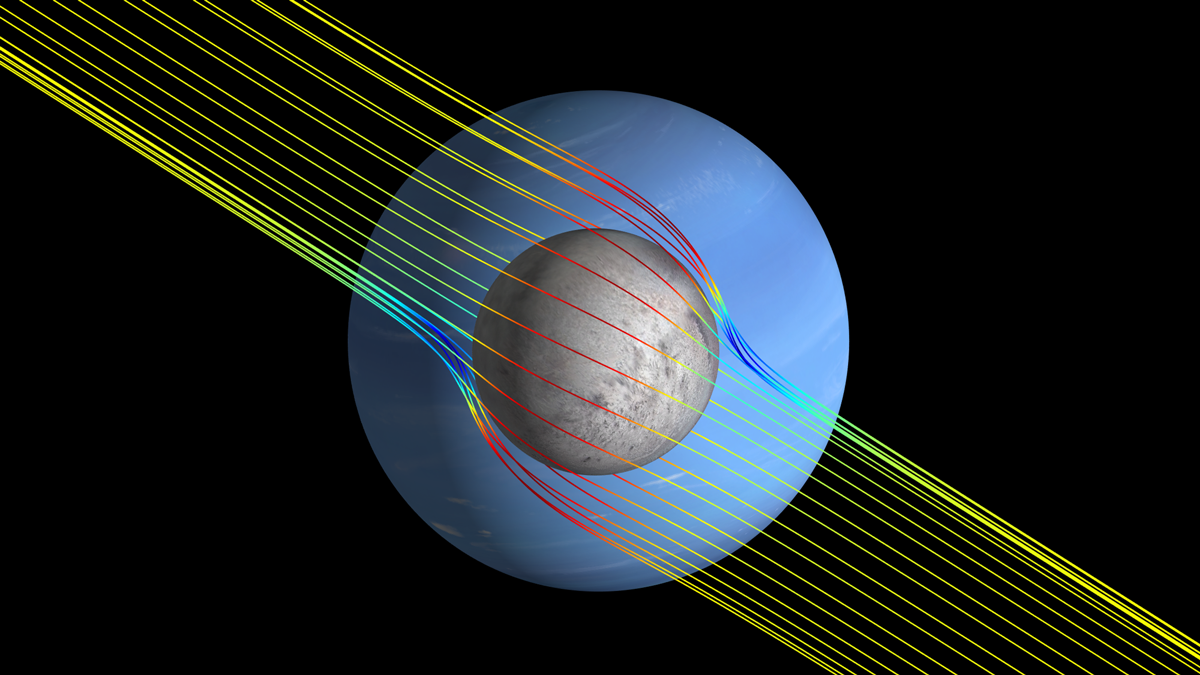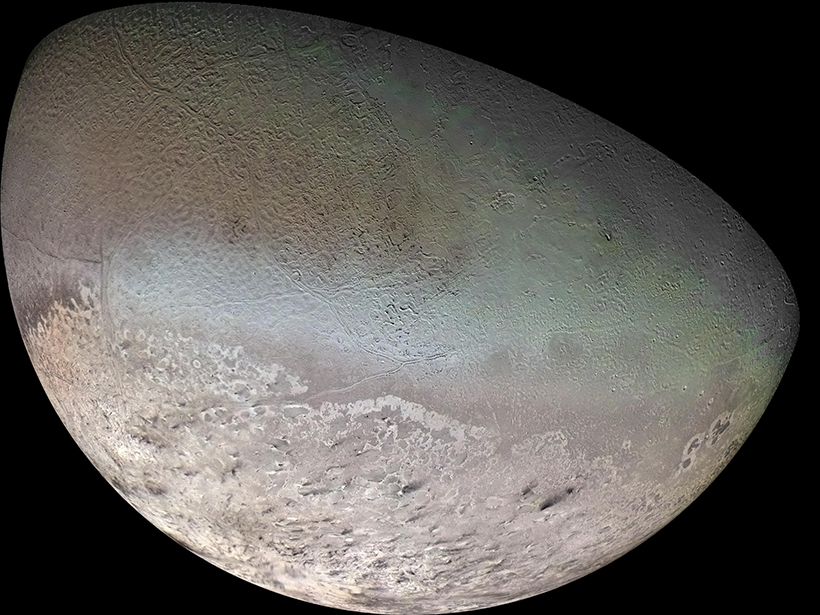Space and ocean scientists take a splash course in multidisciplinary science to chart our solar system’s ocean worlds.
Triton
Posted inResearch Spotlights
Encontrando los océanos ocultos de las lunas usando campos magnéticos inducidos
Un análisis de componentes principales de modelos especulativos puede predecir con más seguridad que las técnicas anteriores la p^ppresencia de un océano subsuperficial en un objeto planetario.
Posted inResearch Spotlights
Finding Moons’ Hidden Oceans with Induced Magnetic Fields
A principal component analysis of speculative models can more confidently predict the presence of a planetary object’s subsurface ocean than previous techniques.
Posted inResearch Spotlights
Time, Tides, and Wandering Poles
Models of Neptune’s moon Triton reveal curious behavior in how tidal forces and mass anomalies cause the poles to reorient their location.




